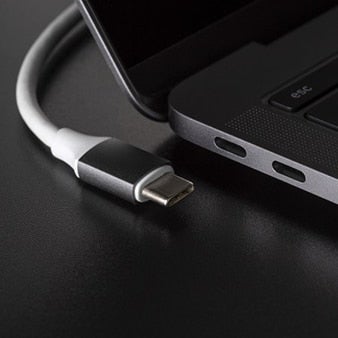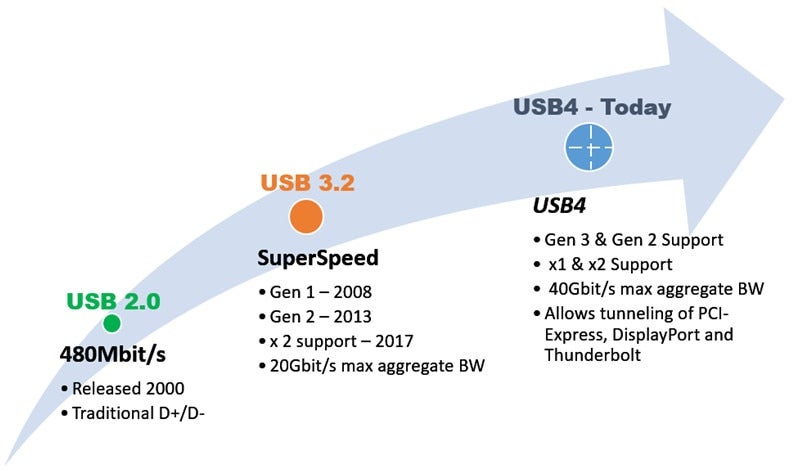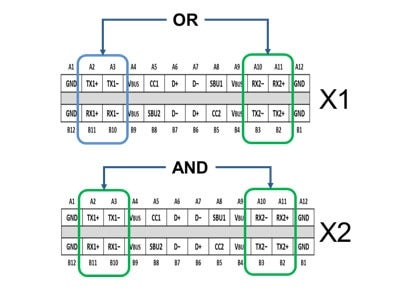Recently, you may have seen USB4 start showing up in tech articles or social media posts and thought, “oh great another new USB spec to worry about”. Maybe you just started looking at USB Type-C or maybe you designed your first device and thought you had it all figured out when USB-IF then comes out with another new spec! Bringing another naming convention and a completely new round of specs for USB-C and USB Power Delivery (PD).
So how does USB4 affect your design? It depends. For those that do not want to wade into the thousands of pages across multiple specifications to understand what changed, this blog is for you and hopefully provides enough of an overview to help you understand USB4’s potential impact on your application.
Ultimately, USB4 is a next-generation USB data specification that increases the bandwidth of the interface and allows other protocols to share the physical interface. The biggest protocol to share the interface with USB is Intel’s Thunderbolt. Since 2000, USB-IF has been systematically increasing the throughput of the interface to meet customer’s increasing data needs. Starting with USB 2.0 in 2000 then USB 3.2 in 2013, USB data rates have scaled from 480Mbps to 20Gbps. USB4 increases the data rates even further to 40Gbps throughput.
How do they do that? It is a combination of increasing the number of lanes and increasing the speed of the interface. Starting with USB 3.2, USB-IF introduced the concept of x2 functionality which allows traffic on both super speed pairs of the Type-C connector. USB4 is fully backwards compatible to existing USB3.2 and USB2.0 interfaces.
Where USB4 branches from previous USB data specs is it fully utilizes USB Type-C connector and USB PD protocol to configure and initialize the data link instead of using the USB data lines as previous generations have. With this change, USB4 does require a USB Type-C connector and USB PD. Due to this integration with USB Type-C and PD, those specifications needed updates to align to USB4. The majority of the updates are additions of USB4 specific commands and fields like enter and exit commands for USB4, fields to identify USB4 capable cables and provisions to allow SBU pins to be used to identify and configure active circuitry to support the higher data rates.
So where does this leave your design? For designs currently using USB3.2 and/or Thunderbolt, USB4 is an attractive upgrade and worthy of looking at in more detail. If your USB3.2 design is using a Type-A connector, you will need to switch to USB Type-C and select a USB PD controller to implement USB4. ON Semiconductor offers a full portfolio of controllers for USB4. For designs already using a Type-C connector, USB4 will be an update to the USB PD controller to implement the new commands required for USB4. For ON Semiconductor programmable controllers, this would be a firmware update to implement the new commands and flows. For designs that use USB for power and/or basic connectivity, USB4 will have almost no impact. Designs will need to be compliant to the updated USB Type-C and PD specifications but the changes that are not USB4 are minor in scope. ON Semiconductor’s portfolio of programmable controllers can all be updated through firmware updates to meet the latest compliance requirements for USB Type-C.
Learn more about our USB-C Solutions today!


